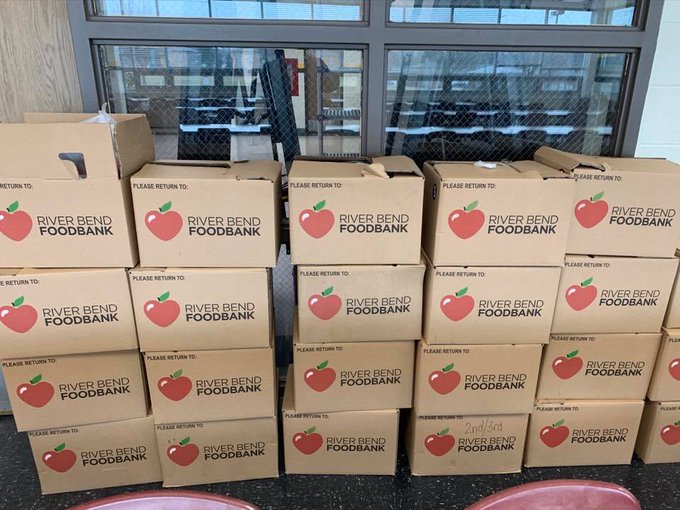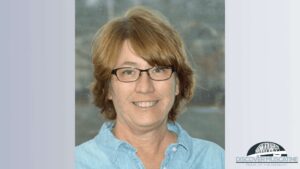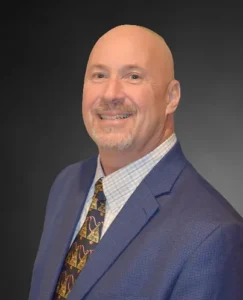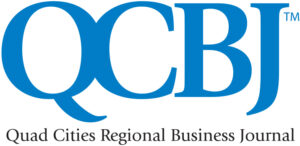
Grants are the lifeblood of Quad Cities nonprofits and grant writing is an essential duty for those who are dedicated to doing good in their communities.
Take, for example, the QCBJ’s Giving Guide distributed to subscribers and available for purchase. It features more than 150 worthy Quad Cities nonprofits seeking Quad Citians’ support. Chances are that many, if not all of them, have been the recipients of critical dollars that flowed through one or more of the community foundations that call the Quad Cities home.

“I hope anyone who spends time with this Giving Guide will come away with an appreciation for the vital role our nonprofit sector plays in building a more equitable, inclusive, and vibrant Quad Cities region,” said Sue Hafkemeyer, president & CEO of the Quad Cities Community Foundation. “I hope you enjoy coming across the nonprofits you know and love — and that you discover new nonprofits you might consider supporting. I hope you’ll see that you have all the generosity you need to play an invaluable part in their work and their missions.”
Community foundations, like the one she now leads, are tax-exempt charitable organizations that help their communities by managing, maintaining and administering funds to local nonprofits on behalf of a generous donor community.
The first community foundation was created in 1914 by Cleveland, Ohio banker Frederick H. Goff.
These days, there are more than 800 such grantmaking public charities throughout the United States that bring together the resources of individuals, families and businesses to support local nonprofits they care about.
That includes the Quad Cities Community Foundation, which over the years has awarded more than $96 million in grants to nonprofit organizations in Rock Island and Scott counties. (Communities outside the Quad Cities also can establish Community Funds at the Quad Cities Community Foundation to provide financial support for their local organizations.)
Ms. Hafkemeyer said her foundation is “fortunate to partner with generous people all across the Quad Cities – and even across the country – who love the Quad Cities. Whether they’re individuals or families or corporations, they believe that charitable gifts can make their community a better place to live, work, and play — and that we can help them reach their goals.”
Where do dollars come from?
The work of these foundations is driven by generous people who truly care, according to Charla Schafer of the Greater Muscatine Community Foundation, which grants more than $5 million a year to nonprofits in the Muscatine County area.

“I read once that there are two kinds of people: those that sit and talk, and the dancers, the ones that listen and move. Philanthropists are dancers – giving through time, treasure, and talent to create a brighter future for our community,” she said.
“The Community Foundation of Greater Muscatine was built from a collection of dancers; leaders, visionaries and friends sharing their time, love, action and small and large gifts to shape the future of our collective community.”
Ms. Schafer added: “What would Muscatine and the lives of our neighbors look like today, if those that came before us had chosen not to dance?”

Like the QC foundation, the Moline Foundation serves a wider bistate community. The grantmaking agency President and CEO Paul Plagenz leads includes Scott County in Iowa and, in Illinois, the counties of Rock Island, Mercer, Henry, Warren, Henderson, and McDonough.
His foundation staff “works to inspire generosity to assist with the most urgent needs of our various communities,” Mr. Plagenz said. “The majority of the foundation’s grants come from a donor who has a specific area of interest or a particular nonprofit or group of nonprofits they wish to support.”
The Moline Foundation traces its roots to a donation made in 1953 when “one thoughtful person made a gift of $350,000 and over the past 68 years more than $40 million has been awarded to help a wide variety of evolving needs in our community,” he said.
“Every day, I am partnering with individuals and organizations who want to improve our community; specifically, to improve the lives of their neighbors,” he added. “For the most part, the donors will never meet the people they help, but they know there is a need and want to assist.”
Examples of donor generosity abound in the Quad Cities, Mr. Plagenz said. They are people like the late Tom and Karen Getz. “As community leaders, they were involved in numerous nonprofits throughout their entire lives,” he said. “They established a fund to support organizations promoting civic pride, youth development and the arts. Every year grants are made to support projects and programs bringing inspiration and happiness to so many people. Their love for our community continues.”
There are many ways to give
Quad Citians who want to invest in their community’s nonprofits through a community foundation can set up their own fund and or give to an established general fund or one that is based on a specific charity or need.
“We like to say that there’s no wrong way to give, and we’re proud to work with people who give for all reasons, in all ways, at all levels,” Ms. Hafkemeyer said.
How are grants awarded? Some recipients are recommended by the donors who hold funds at the community foundation based on their individual and collective passions and interests. Others are decided by panels of community leaders who comb over the competing applications submitted to the foundation, the QCBJ learned.
There are many places to choose from when directing your charitable dollars to Quad Cities grantmakers. Most community foundations are centered on strategic plans organized around widely shared goals and missions.
In Muscatine, for example, that includes housing, health, education and racial justice, Ms. Schafer said.
Partnerships also matter to these foundations’ efforts to assist their communities.
“We live and breathe our mission and work every day, but we know that not everyone understands what a community foundation is or how they can get involved,” Ms. Hafkemeyer said. “We also know that it’s easy to think that ‘philanthropy’ — or generosity — must mean large financial gifts. Not everyone recognizes the generosity that’s all around us.”
She pointed to the community’s response to a call by the River Bend Food Bank last December warning that food donations were down 40%. “Through conversations with the food bank, we saw the opportunity to bring other funders and generous individuals together to help bridge the gap,” Ms. Hafkemeyer added. “Ultimately, our campaign raised $224,000 to help River Bend provide more than one million meals. Talk about an inspirational example of generosity and collaboration.”
One of the challenges for the Moline Foundation is “helping people understand the numerous ways they can help both today and tomorrow,” Mr. Plagenz said. “It is sometimes overwhelming to see the needs of our community but letting people know there is a local organization with professional staff and expertise ready to listen and help with their philanthropic goals is a challenge.”
Consider legacy giving
If they haven’t already, foundation leaders also urge Quad Citians to plan ahead for community giving after they’re gone. “For many of our donors and fund holders, establishing a plan gift has brought such happiness and meaning to their lives,” Mr. Plagenz said.
“Talk to your loved ones about what your legacy will be – what organizations you want to see continue and thrive. Share this with family, then speak with your financial professionals and include these organizations in your plans,” he added.
“I think you will be glad you did.”
Ms. Schafer knows firsthand how foundations like hers and the generous donors who fuel them are “unleashing limitless benevolence, and catalytic change in our communities.”
“I worked for a few years at the local homeless shelter, and what I saw when I walked in each morning was homeless and near homeless children and their families,” she said. “The faces of the children warm your heart and put a fire in your belly to take action.”
About 80% of homelessness is caused by lack of affordable housing, she said. Ms. Schafer added: “In order to allow our children to reach their true potential, to not experience housing and food insecurity, we have to collectively work upstream to address the supply-side failure of housing in our communities and prevent the downstream outcomes it creates for our children, neighbors, and economic growth.”




